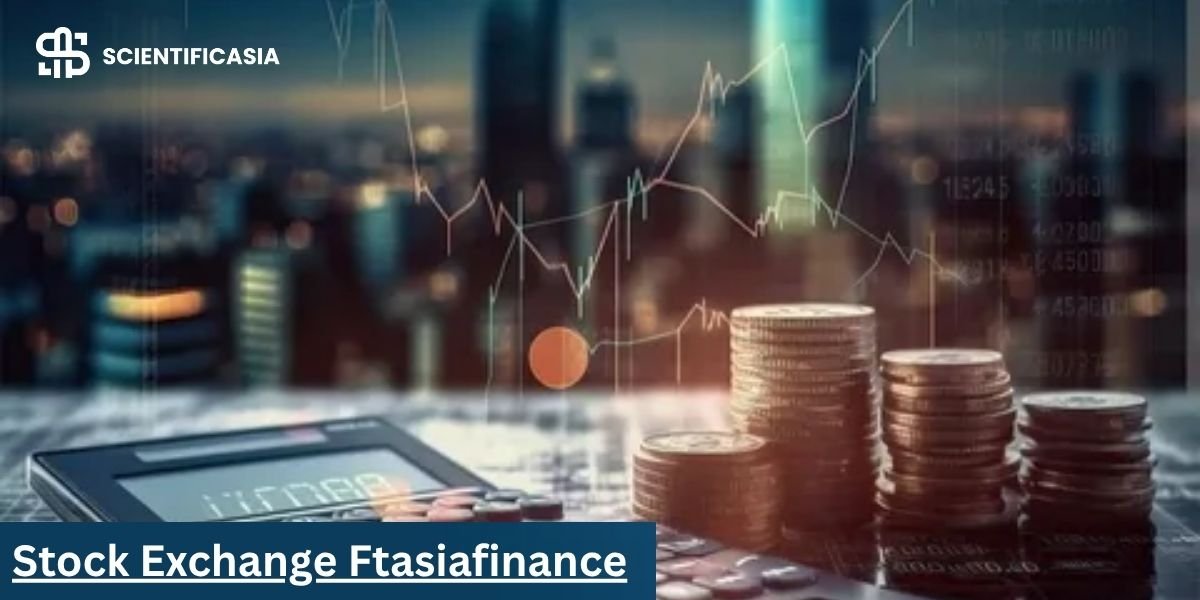Have you ever wondered what separates a casual investor from a truly informed one? It often comes down to their map. Most people just glance at New York or London, but if you want to find the world’s fastest growth stories, you absolutely have to look East. The Asia-Pacific region, with its buzzing exchanges in places like Shanghai, Tokyo, and Mumbai, isn’t just an emerging story anymore—it’s a financial powerhouse, representing over 27% of total global market capitalization as of late 2024. That’s huge!
But let’s be honest, jumping into these markets can feel like trying to read a foreign language. The rules are different, the risks are bigger, and the data is often confusing. That’s where specialized, expert-level analysis comes in.
This complete guide is designed to cut through that noise. We’re going to break down the mechanics of the stock exchange, dive deep into the unique markets of Asia, and show you why resources like FTAsiaFinance (our specialized hypothetical source for premium Asian financial insights) are essential for navigating this complex, high-reward environment. By the time you’re done reading, you’ll not only understand the Asia markets, but you’ll also know how to approach them like a seasoned professional.
What Is a Stock Exchange? It’s More Than a Ticker Tape
Let’s start with the basics, in the simplest terms we can. What exactly is a stock exchange?
Think of it like a giant, highly regulated farmers market for companies. Instead of apples or tomatoes, they sell securities (like stocks). Companies come to this market to sell little pieces of ownership—shares—to raise money for growth.
The key thing to remember is the difference between the primary and secondary markets.
- Primary Market: This is where a company sells its shares for the very first time (an IPO). The money goes straight to the company.
- Secondary Market: This is the day-to-day trading floor. When you or I buy a share from another investor, that’s the secondary market. The company doesn’t get that money; it just tells them what people think their value is.
The real purpose of an exchange is to provide three things: transparency (everyone sees the price), liquidity (you can sell quickly), and regulation (there are rules to keep things fair).
How Stock Exchanges Actually Operate
Have you ever imagined the chaos of a 1980s trading floor with people yelling and throwing paper? Well, it’s much tidier now!
Today, the entire process is lightning-fast and electronic. When you hit the ‘buy’ button on your broker’s app, this is what happens in milliseconds:
- Order Matching: Your order is sent to the exchange’s computer system, which instantly tries to match you with a seller who wants the same price.
- Execution: Once matched, the trade is executed.
- Clearing and Settlement: This is the boring, but crucial, part. It takes a couple of days (often T+2 or two days after the trade) for the ownership of the stock to officially transfer to you and for the money to officially move to the seller.
Pro Tip: Understanding Trading Hours and Market Sessions is critical in Asia. Because of time zones, Asian markets open before Europe and the US. Missing the opening hours for major markets like Tokyo or Hong Kong means you could be reacting to news instead of trading on it.
Major Stock Exchanges in Asia: The New Financial World Map
Asia’s markets are incredibly diverse. You have established, blue-chip markets like Japan and then rapidly growing, highly regulated markets like China. The dynamics of each are distinct, and simply treating them all as one “Asian market” is a rookie mistake.
Take a look at how the biggest players stack up (data updated for late 2024, early 2025):
| Exchange Name | Country | Major Index | Market Cap (Est. USD Trillions) | Unique Factor |
| Shanghai Stock Exchange (SSE) | China | Shanghai Composite | ~7.8 | Heavily domestic investor base. |
| Japan Exchange Group (JPX/TSE) | Japan | Nikkei 225 | ~6.5 | Deep liquidity, highly developed governance. |
| Hong Kong Exchanges (HKEX) | China/HK | Hang Seng Index | ~4.5 | Global gateway, key for Chinese offshore listings. |
| National Stock Exchange (NSE) | India | Nifty 50 | ~4.0 | Fastest-growing investor base globally. |
| Korea Exchange (KRX) | South Korea | KOSPI | ~2.1 | Dominated by major conglomerates (Chaebols). |
The sheer scale is hard to grasp. According to the OECD’s 2025 report, Asia’s public equity markets reached a staggering $34.4 trillion in market capitalization in 2024, up significantly from the previous decade. That growth is where opportunity lives.
Understanding Asia’s Share Classes (A-Shares, H-Shares, N-Shares)
Now, this is where it gets tricky, especially with Chinese companies. If you’re serious about Asian investing, you need to know this language.
- A-Shares: These are the shares of mainland Chinese companies that trade on the Shanghai (SSE) or Shenzhen (SZSE) exchanges. They are priced in Chinese Yuan (CNY). Historically, these were only for domestic Chinese investors, but access is opening up through programs like Stock Connect. Crucially, A-shares often trade at a premium to H-shares due to the different investor base.
- H-Shares: These are the shares of mainland Chinese companies that trade on the Hong Kong Stock Exchange (HKEX). They are priced in Hong Kong Dollars (HKD) and are much easier for international investors to buy.
- N-Shares: These are shares of Chinese companies listed on New York (NYSE) or NASDAQ (like Alibaba or JD.com) as American Depositary Receipts (ADRs).
Why should you care? Well, you might find the same company trading as an A-share at a 15% premium and an H-share at a lower price. An expert investor knows which one to buy, or perhaps, which price signal is more honest. This dual-listing structure is unique to the region.
FTAsiaFinance Market Insights: Your Specialized Edge
Let’s assume FTAsiaFinance represents a high-caliber research platform—the kind of source that digs past the headlines. What should this type of specialized insight focus on?
The biggest difference between global data and specialized Asian data is the context. A chart is just a line unless you know why it’s moving.
Data Feeds and Professional Tools for Asia Markets
While most retail investors use brokerage platforms, true institutional-level insights require tools that process vast amounts of region-specific data. This includes access to raw data feeds, macroeconomic models on currency forecasts, and timely reports on regulatory shifts from the various Asian financial authorities (like the China Securities Regulatory Commission or the Monetary Authority of Singapore).
FTAsiaFinance’s mission, we’ll imagine, is to translate that complex, high-speed information into actionable market calls, focusing on things like:
- Sector Deep Dives: Identifying where the next growth engine is—perhaps it’s the booming electric vehicle supply chain in Southeast Asia or the biotech innovation coming out of South Korea.
- Geopolitical Risk Assessment: Analyzing how trade disputes or regional elections will impact specific listed companies. This is an art that goes far beyond a simple news alert.
To give you an even broader perspective on refining your investment approach, especially when trying to spot those winning opportunities and dodge the pitfalls, you might find this discussion particularly insightful:
📺 Want to sharpen your investment game? Learn how to spot winning investments and manage risks effectively in this expert discussion: Stock Market Secrets: How to Spot Winning Investments & Avoid Losses With Abdul Rehman Najam | Ep#130
How to Invest in Asian Stock Exchanges: Practical Steps
So, you’re ready to put your money to work in Asia. How do you actually do it?
Tip 1: Choosing the Right Broker
Choosing a broker isn’t just about the lowest fee. For Asian markets, you need one that offers:
- Access: Does the broker provide direct trading access to the Shanghai (A-Shares via Stock Connect) or Tokyo (TSE)? Many global brokers are limited.
- Currency Exchange: What are their fees for converting your US Dollars (USD) or Euros (EUR) into Yen (JPY) or Hong Kong Dollars (HKD)? High FX fees can easily erase small gains.
- Local Knowledge: A good broker often provides basic research or data tailored to those specific Asian exchanges.
Tip 2: Cross-Border Tax and Withholding (W-8BEN Forms)
Here’s a topic most beginners overlook, and it can be a headache: taxes.
When a US or European investor receives a dividend from an Asian company, the local government often “withholds” a portion of that money for tax purposes—this is called Withholding Tax (WHT). The rate depends entirely on the tax treaty between your home country and the Asian country where the stock is listed.
For example, Indonesia currently charges a final flat tax on the sale value of shares, but countries like Singapore and Malaysia typically levy no capital gains tax on share profits, which is a massive incentive for foreign investors. If you’re a US person, you’ll likely need to file a W-8BEN form with your broker to certify your foreign status and qualify for reduced WHT rates under tax treaties. My advice? Always check the local tax regime before you press ‘buy’.
Risks and Considerations: The Volatility Challenge
We have to be honest: Asian markets are generally more volatile than established Western markets. With high reward comes high risk.
Case Study: The Asian Financial Crisis (1997-1998)
This is the ultimate lesson in Currency Risk. In the mid-1990s, many Southeast Asian countries (like Thailand, South Korea, and Indonesia) pegged their local currencies to the US Dollar. This felt safe, but it led to huge amounts of borrowing in USD.
When foreign investors started panicking and pulled their money out, these countries could no longer maintain the peg. When the Thai Baht collapsed, losing almost half its value, local companies that had borrowed in USD suddenly owed twice as much in Baht terms. This caused massive bankruptcies, stock market crashes, and a devastating regional recession.
The Lesson: A company can be performing perfectly well in its local market, but if its currency suddenly drops against your home currency, your investment can still lose money.
Currency Risk and Hedging Strategies
For the non-professional, how do you protect yourself from this?
- Diversification: Don’t put all your eggs in one Asian basket. Invest across multiple countries (Japan, India, Singapore) whose currencies don’t always move together.
- Use Hedged ETFs: These are Exchange-Traded Funds (ETFs) designed to minimize the impact of currency fluctuation by using instruments like Non-Deliverable Forwards (NDFs). They are often less exciting in a bull market, but they are a lifesaver when markets get rocky.
Emerging Trends: The Future is Green and Digital
The story of the Asian stock exchange is no longer just about manufacturing; it’s about digital leadership and sustainability.
ESG and Green Investing Growth
ESG (Environmental, Social, and Governance) is no longer a niche topic in Asia; it’s a mainstream mandate.
Statistic: One study noted that approximately one-third of Asia’s affluent investors are actively engaged in ESG investing, with another large percentage planning to start soon.
Why? Because Asian governments and regulators—especially in Singapore, Malaysia, and Hong Kong—are actively pushing for better corporate governance and green finance. Companies with strong ESG ratings are increasingly favored by massive institutional and sovereign wealth funds. Look for stocks in renewable energy (especially solar and geothermal, like in Indonesia) and tech giants that are positioning themselves as green transition leaders.
Tech Disruption in Exchanges
From China’s fintech behemoths to India’s massive retail investor boom (driven by easy-to-use trading apps), the exchanges themselves are transforming. Cross-border trading links are becoming simpler, and technologies like blockchain are being explored to make the clearing and settlement process faster and more secure. The whole system is becoming more accessible and, perhaps, more efficient.
Regulation and Market Safety
Every investor asks, “Is my money safe?” The answer in Asia is a careful “Yes, but be aware.”
Asian markets are governed by powerful, independent regulators (like the MAS in Singapore or the Securities and Exchange Board of India – SEBI). These bodies ensure trading fairness and protect investors.
However, political instability and government intervention (especially in markets dominated by state-owned enterprises) remain a risk. That’s why following FTAsiaFinance-level news that focuses on policy rather than simple price action is so important. When a government makes a policy decision, the market reaction can be swift and brutal, and you need to understand the why instantly.
FAQs – Stock Exchange & Asia Markets
We’ve covered a lot of ground, but you may still have some lingering questions.
1. Which is the single biggest stock exchange in Asia by market value?
While Japan’s TSE has long been a key player, the Shanghai Stock Exchange (SSE) in Mainland China is currently the largest in Asia by a considerable margin, followed by Japan and then Hong Kong.
2. Is investing in Asian markets suitable for a new investor?
I think a new investor can certainly gain exposure, but it’s probably best to start with low-cost, diversified ETFs that track broad Asian indices (like the MSCI Asia ex-Japan Index). Direct stock picking in Asia is often better suited for investors with a medium to high-risk tolerance and a decent amount of financial knowledge.
3. What is the most critical economic factor for Asian stock prices right now?
Beyond the usual interest rate talk, the single most critical factor is the US-China economic relationship and trade policy. Any significant shift in tariffs, technology controls, or diplomatic relations immediately sends ripples through Asian markets, impacting technology, manufacturing, and supply chain stocks from Korea to Vietnam.
Conclusion: Asia is the Investor’s Frontier
The stock exchanges of Asia are not just a periphery of the global financial system; they are its pulsing heart, driving growth that the rest of the world watches closely. From the sheer size of China’s market (now the largest in Asia), to the technological and ESG revolution sweeping across Southeast Asia, the opportunities are vast.
But remember the crucial lesson of the Asian Financial Crisis: growth is always shadowed by unique risks, particularly currency and regulatory volatility. The way you mitigate those risks is not by avoiding them, but by being the most informed investor in the room.
That’s the core value of professional insight—the kind of detailed, policy-focused analysis we’ve associated with FTAsiaFinance. It helps you distinguish between a temporary market shudder and a fundamental economic shift.
Don’t just look at the stock price. Look at the policies, the share classes, the taxes, and the currency risks. Are you ready to truly start investing in the world’s fastest-moving market?
Referenced Source URLs
- OECD Asia Capital Markets Report 2025: Equity markets (Current market capitalization data)
- ESG trends gaining ground across Southeast Asia – by way of ESD stocks (Current ESG data)
- H-Shares vs. A-Shares: What’s the Difference? (Share classes explanation)
- Understanding the Asian Financial Crisis: Causes, Effects, and Lessons (Case Study on Currency Risk)
- Capital Gains Tax Exemptions for ASEAN-Listed Securities (Tax information for ASEAN)











